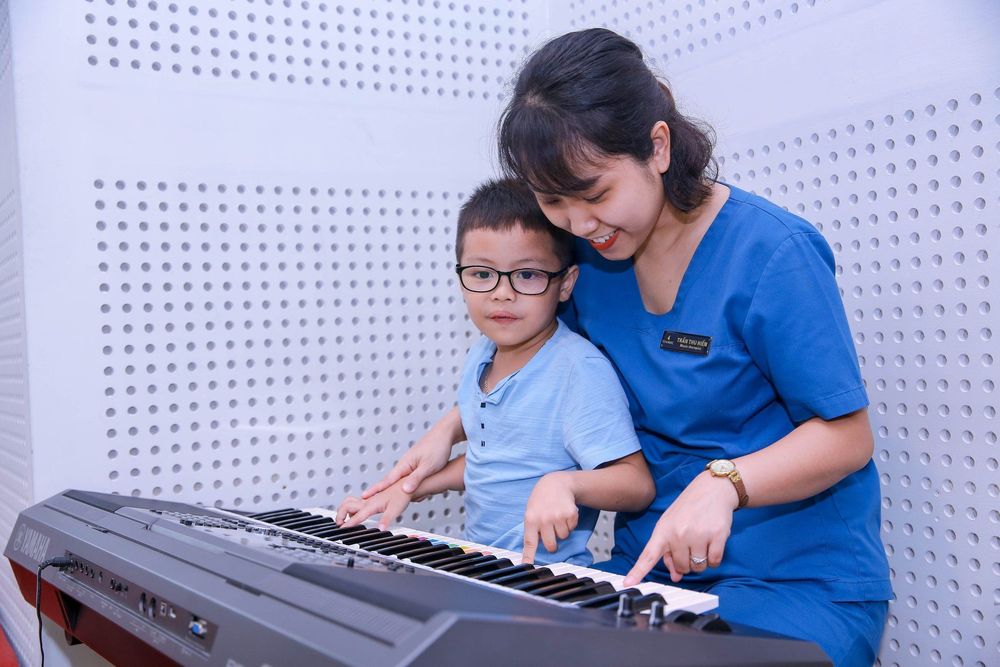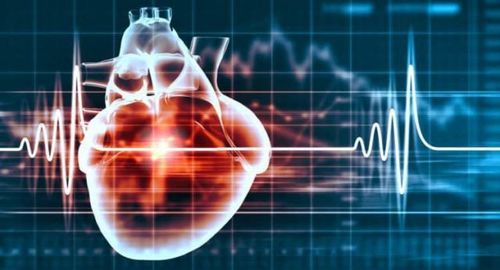This is an automatically translated article.
To be a positive support and encouragement for your child, it is important for parents to understand the criteria for diagnosing a child with autism. Recently, changes in the definition and diagnosis of children with autism are taking place and are more important than ever. Healthcare providers, educators, and government agencies are still sorting out the significance of these changes, but well-informed parents are also playing an important role. important in helping their children.1. How do doctors diagnose children with autism?
It's been more than 70 years since autism was first discovered, but knowledge about this complex disorder continues to grow and be researched. In 2013, the American Psychiatric Association (APA) significantly revised its definitions of autism - and the criteria for diagnosing children with autism - for the first time in two decades.What are the changes? The new definition removes similar diagnoses associated with autism, including Asperger's disorder and pervasive developmental disorder nonspecific (PDD-NOS), and replaces them with a single diagnosis: autism spectrum disorder (ASD).
This new definition has been published in the Diagnostic and Statistical Manual of Mental Disorders (DSM), the standard reference for diagnosing people with disorders affecting the brain. Specifically, DSM-5 (fifth version) is the version with new changes.
2. Why does the diagnosis of autistic children change?
The current definition of autism in children, or diagnostic criteria for children with autism, reflects the results of two decades of scientific research and aims to help make autism diagnoses more accurate and effective. These changes are also expected to help doctors diagnose autism earlier in children, playing an important role in effective treatment.Susan Hyman, professor of paediatrics at the University of Rochester and chair of the autism subcommittee of the American Academy of Pediatrics, said: “We're a lot smarter now than we were in 1994 when the DSM-4 came out. We know more about how the brain works and about treatments.”
Scientists still don't know what causes autism, but studies suggest a combination of genetic and environmental factors. Experts now believe that mild autism, like Asperger's, is essentially no different from severe autism - the genes of both types of autism have a lot in common.
Scientists say the old way of categorizing autism into Asperger, PDD-NOS and autism no longer makes sense. "It's a non-significant difference," said Bennett Leventhal, a psychiatrist and associate director of child and adolescent psychiatry at the University of California, San Francisco.
The old definition also makes it difficult for parents to get a consistent diagnosis. Prior to the changes in the DSM-5, diagnosis was especially difficult when a child had a milder form of the disease, such as Asperger's.
Many children with milder autism develop normal language skills and have average or above average intelligence, which can make the condition harder to detect. Without a diagnosis of more severe autism, many parents have difficulty finding treatment services.

Nhiều trẻ tự kỷ nhẹ hơn phát triển các kỹ năng ngôn ngữ bình thường và có trí thông minh ngang mức trung bình hoặc trên trung bình
No one knows for sure how the changes to the DSM will unfold - and some even fear that children may not get the help they need. But Lord says the change will help detect more children with autism, not fewer.
Lord, director of the Center for Autism and Brain Development at New York-Presbyterian Hospital, said: “The main point of the diagnostic criteria for children with autism is to be broader.”
3. Do changes in the DSM-V make it easier to diagnose autism?
Experts say the DSM-5 will at least make diagnoses more consistent, although no one knows for sure how the changes will affect children with autism."We hope the DSM-5 will make things easier because the criteria for diagnosing autism in children will be more relevant," Lord said. Identifying symptoms and establishing a diagnosis is simpler today than it was in the days of the DSM-4, when doctors had to sift through complex and overlapping symptoms to try to identify a specific form of autism.
However some of the previous problems in diagnosing autism may persist - even with the changes in the DSM-5. With all the classic symptoms present, autism can be fairly easy to diagnose, but most children with autism do not.
Doctors assess that children with a wide variety of symptoms may also have other conditions that often coexist with autism, such as intellectual disability, attention deficit hyperactivity disorder, anxiety, or depression sensitivity - makes a definitive diagnosis very difficult.
And some people suggest that repetitive behaviors, one of the main signs of autism, may not be apparent until the child is older. If the DSM-5 is aimed at diagnosing autism earlier, critics worry that some children may still be missed.
Pediatricians and family physicians should look for signs of autism during their routine physical exams, and the American Academy of Pediatrics (AAP) recommends that all children be screened. autism control at visits at 18 months and 24 months of age. Doctors can diagnose autism in children 18 months and younger, but some symptoms may not be apparent until the child is in an environment that requires more social skills, such as school. learn.

Tất cả trẻ em nên được tầm soát chứng tự kỷ ở các lần khám ở mốc 18 tháng và 24 tháng tuổi
4. For children with autism, how will the DSM-5 help?
The DSM-5 helps determine how much autism is affecting a child's life. Doctors or autism specialist groups will use the DSM-5 to make a diagnosis. An autism diagnosis is the first step for a child to receive treatment and other support services.Early and effective intervention is the best opportunity to help children become more independent in the future. A small percentage of children with autism improve significantly to the point of no longer having symptoms, and many others to the point of no longer needing supportive services because their symptoms can be controlled.
Leventhal says: “Diagnosis is not just a label for children with autism.” A diagnosis of autistic children forms the basis of a future treatment plan. He suggests making sure parents understand the DSM-5 and screening tools, and only working with clinicians who advocate for family involvement.
5. What do these changes mean for people with Asperger's or PDD-NOS?
The DSM-5 says anyone with a previous diagnosis of Asperger's or PDD-NOS has an autism spectrum disorder. While a person with a previous diagnosis of Asperger's or PDD-NOS may continue to refer to it by its old name to a doctor or therapist, these terms will no longer be used in the future. future.Lord says: If the DSM-5 works as intended, more children will be eligible for support services. Some local laws require children with autism to receive support services at no cost, such as therapeutic interventions and individualized education plans at school. In contrast, according to the DSM-4, disorders such as Asperger's and PDD-NOS are not always protected.

Nếu DSM-5 hoạt động như dự kiến, nhiều trẻ em hơn sẽ đủ điều kiện nhận các dịch vụ hỗ trợ hơn
6. What happens to children who don't fit the new autism diagnosis?
There is some concern that not all children will easily fit into the new definition of autism and that as a result, they will not have access to services from which they could benefit. Activists and researchers are assessing whether some children may be overlooked because of the changes in the DSM-5.Some well-functioning children previously identified as having Asperger's disease or PDD-NOS but not meeting current ASD criteria may be diagnosed with social communication disorder (SCD), a The new status is defined in the DSM-5. Symptoms of SCD include difficulty using spoken and written language appropriately as well as difficulty performing nonverbal communications, such as facial expressions and gestures.
Children with SCD do not have the same repetitive or restricted behaviors and interests as children with autism.
Daniel Coury, medical director of the Autism Speaks Autism Treatment Network, said: “At this time, there are no treatment guidelines for social communication disorder. "Most experts recommend that children with SCD be treated like children with autism spectrum disorder."
7. Has the child lost access to treatment because of the changes in the DSM-5?
The experts are very clear: No child diagnosed with an autism spectrum disorder according to the old guidelines has not been diagnosed or treated for autism because of changes in the DSM-5.Coury says: “You could say I used to be Asperger but now I have autism spectrum disorder. “Reevaluation is unnecessary and probably inappropriate.” Studies to date have found that most people with autism-related disorders under the DSM-4 still meet the criteria. new autism diagnosis in DSM-5.
Leventhal says: “The criteria have changed, but it still involves a similar group of children.”
However, it is difficult to compare data before and after the publication of the DSM-5 because scientists gather information differently, for example, the DSM-5 covers symptoms such as problems with sense, these issues are not addressed in the DSM-4.
Autism Speaks, a research and support organization, is conducting a three-year study in South Carolina and hopes this will provide a more accurate look at how the DSM-5 is affecting autism diagnoses and prevalence in general.

Trẻ được chẩn đoán theo hướng dẫn cũ vẫn sẽ được tiếp nhận điều trị dù những tiêu chí chẩn đoán đã thay đổi
8. What about children who are re-diagnosed and removed from the autism spectrum?
Paul Wang, medical research supervisor at Autism Speaks, said: Most people will not be affected by the changes in the DSM-5, but "certainly there are families who are feeling the impact." .Autism Speaks is collecting data on the impact of DSM-5 through online surveys of families and professionals.
Exact numbers aren't available yet, but advocates are hearing inaccurate reports that some children, especially children with Asperger's or PDD-NOS, have been re-diagnosed and moved off the autism spectrum , as well as exiting a treatment program.
"It's sad that children who had a clear need and benefited from this support have lost them," Wang said.
Experts say parents should read to understand the DSM-5 and be prepared to quote it if anyone has questions about a child's diagnosis. You can find copies of reference books at your local library or through your doctor, and you can rent a copy through Amazon.
Pediatrics department at Vinmec International General Hospital is the address for receiving and examining diseases that infants and young children are susceptible to: viral fever, bacterial fever, otitis media, pneumonia in children, ... With modern equipment, sterile space, minimizing the impact as well as the risk of disease spread. Along with that is the dedication from the doctors with professional experience with pediatric patients, making the examination no longer a concern of the parents.
Please dial HOTLINE for more information or register for an appointment HERE. Download MyVinmec app to make appointments faster and to manage your bookings easily.
SEE MOREVinmec Times City - High-tech treatment center for cerebral palsy & autism | October 13 - Workshop "Accompanying Parents - Touching and Connecting" Vinmec established a Center for Counseling and Treatment of Mental Illnesses and Autism Promote recognition of autism as a type of disability












